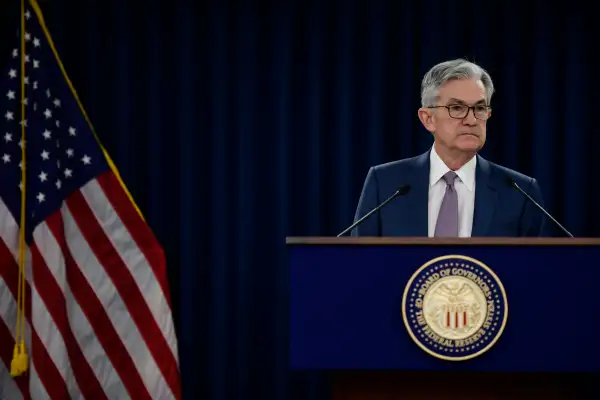The Fed Just Cut Interest Rates on Coronavirus Fears. Here's What That Means for You and Your Money
Money is not a client of any investment adviser featured on this page. The information provided on this page is for educational purposes only and is not intended as investment advice. Money does not offer advisory services.

Investors have been worried for weeks that the coronavirus could stifle global economic growth. On Tuesday, the Federal Reserve reacted, cutting its benchmark interest rate by half a percentage-point on fears that the virus is doing just that.
The move, the first time since the financial crisis that the central bank has cut rates outside one of its regularly scheduled meetings, sent shock waves through stock and bond markets that were already on edge.
While many investors, and even President Trump, had been calling on the Fed to act, it remains unclear whether Tuesday's action would be enough to ease worries about the virus, which has killed thousands while disrupting global supply chains and travel.
Here's what the Fed's rate cut means for you.
Why the Fed Cuts Rates
When the Federal Reserve cuts interest rates, the idea is to make it cheaper and easier for businesses to invest and expand. While the Fed's most basic lever is controlling short-term interest rates, its moves tend to ripple out through the capital markets, affecting both stock and bond prices. While investors reacted immediately to the Fed's action on Tuesday, there are reasons to worry the move might not be as effective as past rate cuts.
One reason is the nature of the current threat. Typically when a recession looms, it's because businesses have become over-extended and confidence in future growth is flagging. Lowering borrowing costs helps borrowers to stay on their feet. But with shuttered factories and curtailed travel schedules, that's not really the problem the global economy currently faces. Lower interest rates won't make it any easier to transport electronics from China to the U.S. or dissuade reluctant tourists form canceling flights or cruises.
The other reason has to do with what the Fed has done already. During the financial crisis, the central bank cut rates to unprecedentedly low levels. While it began a series of rate increases starting in 2015, the benchmark Fed Funds rate never got above 2.25% to 2.5% before the Fed started cutting rates again amid slowing growth in 2016. The rate was at 1.5% to 1.75% before Tuesday's surprise cut lowered it to 1% to 1.3%. In other words, borrowing was already pretty cheap. A related and potentially bigger problem: If a recession does arrive, the Fed won't have much "ammunition" to lower rates further.
What It Means for You
The stock market tends to like interest rate cuts, and equities usually rally whenever the Fed acts (somewhat perversely, considering cuts usually signal worsening economic conditions.) That's what initially happened on Tuesday, with the Dow jumping 600 points in a matter of minutes. Within just a few hours, however, the initial euphoria had worn off and by midday the index was down nearly 900 points, or 3% for the day.
That could be an ominous sign that traders believe the Fed's move won't be enough to stave off coronavirus problems. More likely, however, it simply reflects the wild buying and selling taking place recently, after the Dow had its worst week since 2008 last week, then shot up more than 1,000 points on Monday.
Meanwhile, as the stock market gyrated, bonds rose steadily. Bond prices move in the opposite direction as bond yields, so the Fed's decision to cut interest rates naturally primed the bond market for a rally. It wasn't just short-term rates. Yields on the 10-year Treasury notes fell below 1% for the first time ever. While most Americans don't watch the bond market as closely as the stock market, it can have big implications for your finances too.
The Vanguard Intermediate-Term Bond Index fund, a popular bond fund many Americans hold in their 401(k)s, has returned 4.5% so far this year. (The figure doesn't include Tuesday's market moves.) That should help offset any pain investors feel in their stock portfolios. Falling rates on the 10-year Treasury have also helped push mortgage rates to historic lows, leading to a refinancing boom, with homeowners potentially saving hundreds of dollars on their monthly payments.
More from Money:
Young Investors Just Had Their Worst Week Ever in the Stock Market. Here's How to Shrug It Off
Mortgage Rates Have Hit Historic Lows. Here's How to Decide if You Should Refinance
The New Rules for Figuring Out How Much Home You Can Really Afford
